Temporary architecture has been increasingly used in urban spaces for transient events and situations. These structures have extended the opportunities for architects to test their understanding of urban spaces and human behavior by challenging the boundaries of architecture. Through the master plan of the Chattogram International Trade Fair (CITF), we have tried to explore the possibilities for integrating contextual analysis into the design and re-evaluating the idea of a trade fair to craft an experiential environment for the visitors.
CITF has been an annual event in Chattogram city for the last 27 years. It is the second-largest trade fair in Bangladesh, with an estimated two million annual visitors. In contrast to the short construction period (approximately 30 days), the design and organization phase takes several months. The event runs for 40 days.
The inception of the design started from collecting memories of city dwellers through a podcast called Chattogram Echoes. Most of the stories narrated a nostalgia for a landscape of green terrain, open spaces, and less traffic in the city. However, rapid urbanization has left hardly any of those memories or places intact. These conversations guided us to consider how placemaking is negotiated, focusing on people’s experience in urban spaces.
In CITF’s previous layouts, all the major access points and circulation paths were dominated by vehicular movements, prioritizing construction work and the daily supply of products. We altered the vehicular thoroughfare in the master plan, which allowed us to introduce a 90-m × 15-m plaza dedicated to the visitors. Under a fabric canopy, the plaza accommodated sitting areas, a fountain, floor lights, and plants.
To design the main entrance, we reconceptualized the idea of the gate so that it went from being a doorway to a spatial experience. We designed a circular bamboo installation (20 m in diameter, 10 m in height). This acted as a transitional space to lead the visitors into the plaza. All the materials were locally sourced and reused after demolition.
The master plan included 20 pavilions, 200 stalls, three international zones, a food court, a gaming zone, a prayer space, male and female toilet facilities, car parking, a security booth, an admin office, a fire service, a police security booth, and a power supply station. The design process was flexible enough to address the challenges during construction and to collaborate with various professional and local technicians.

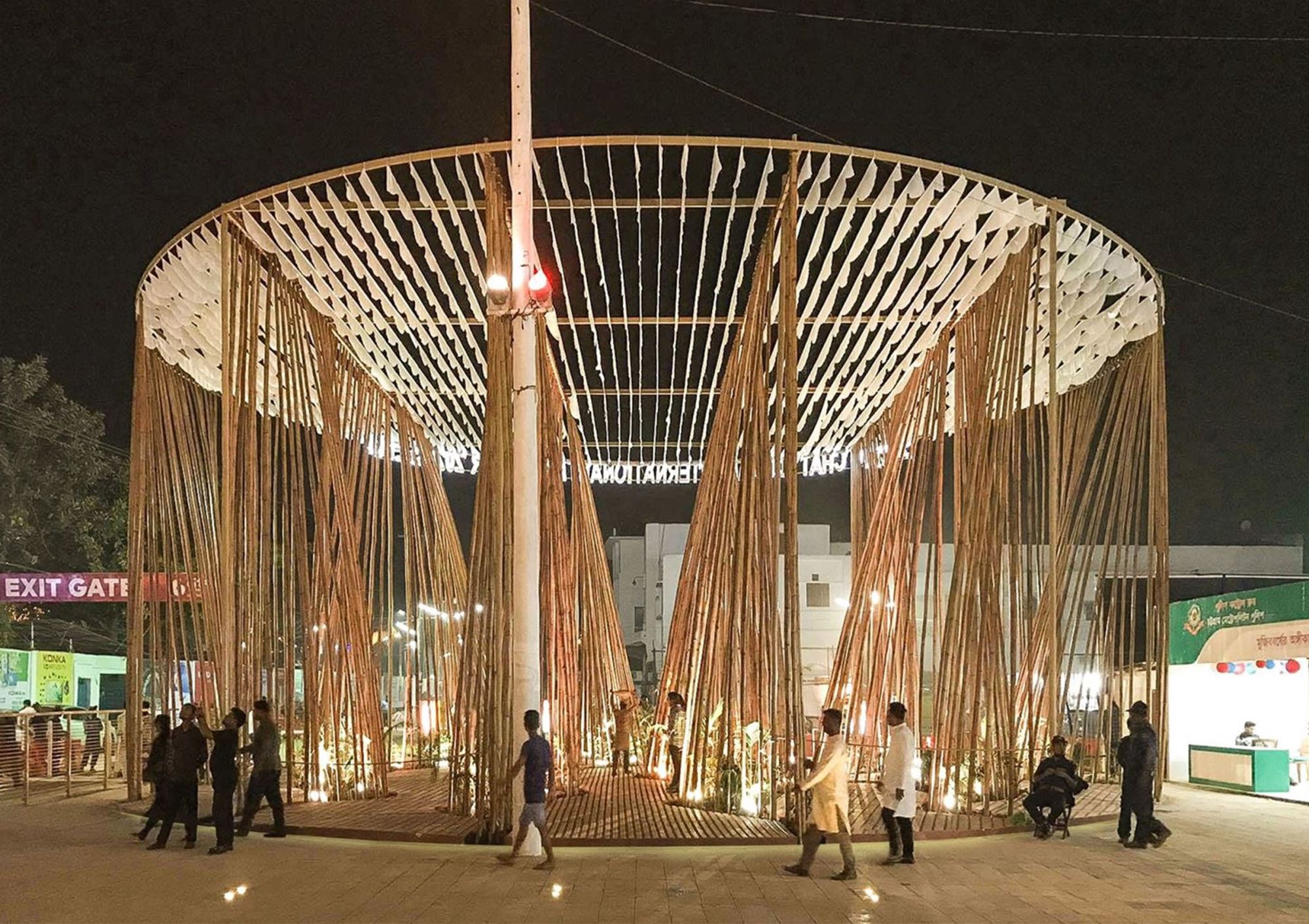



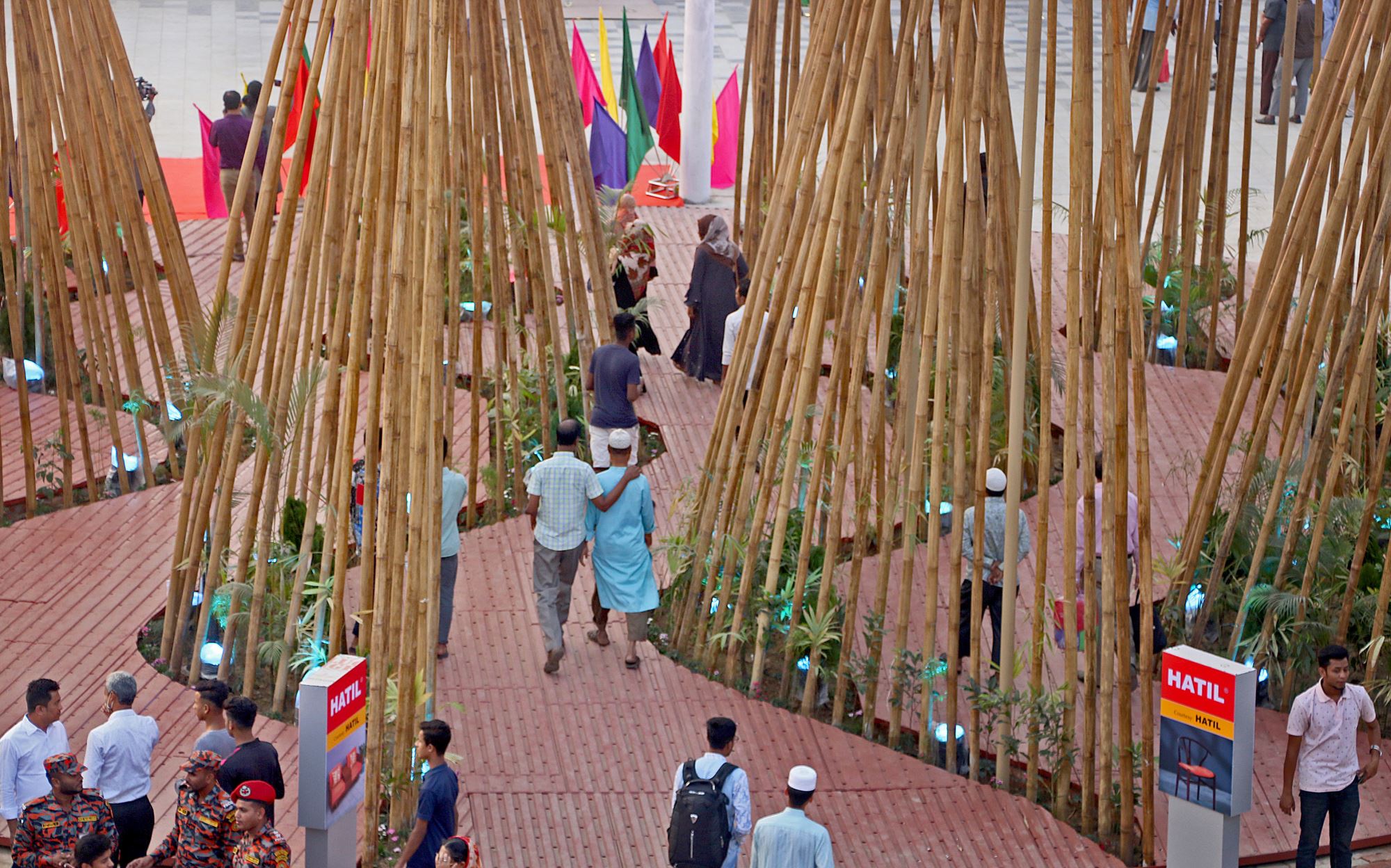
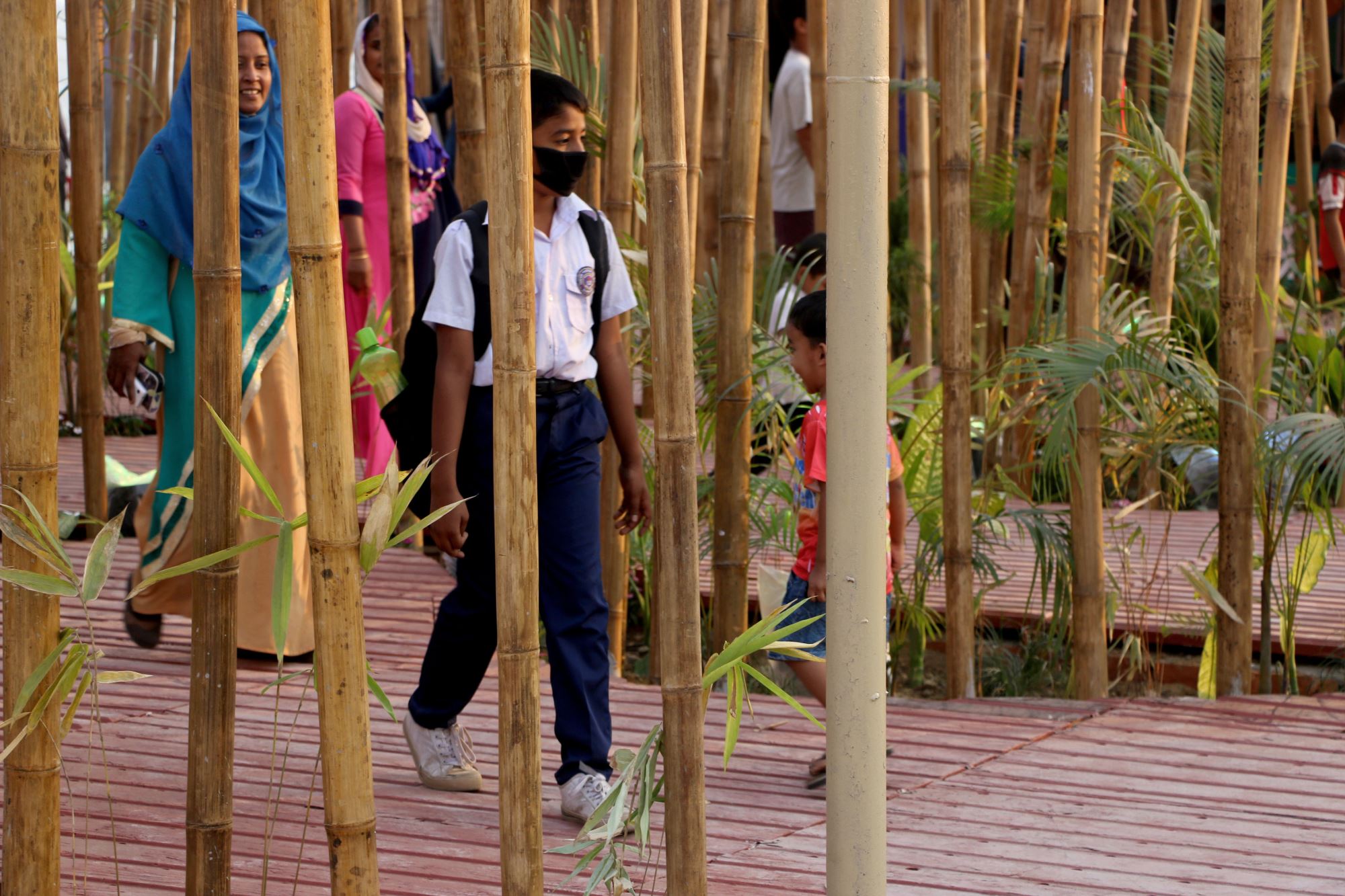
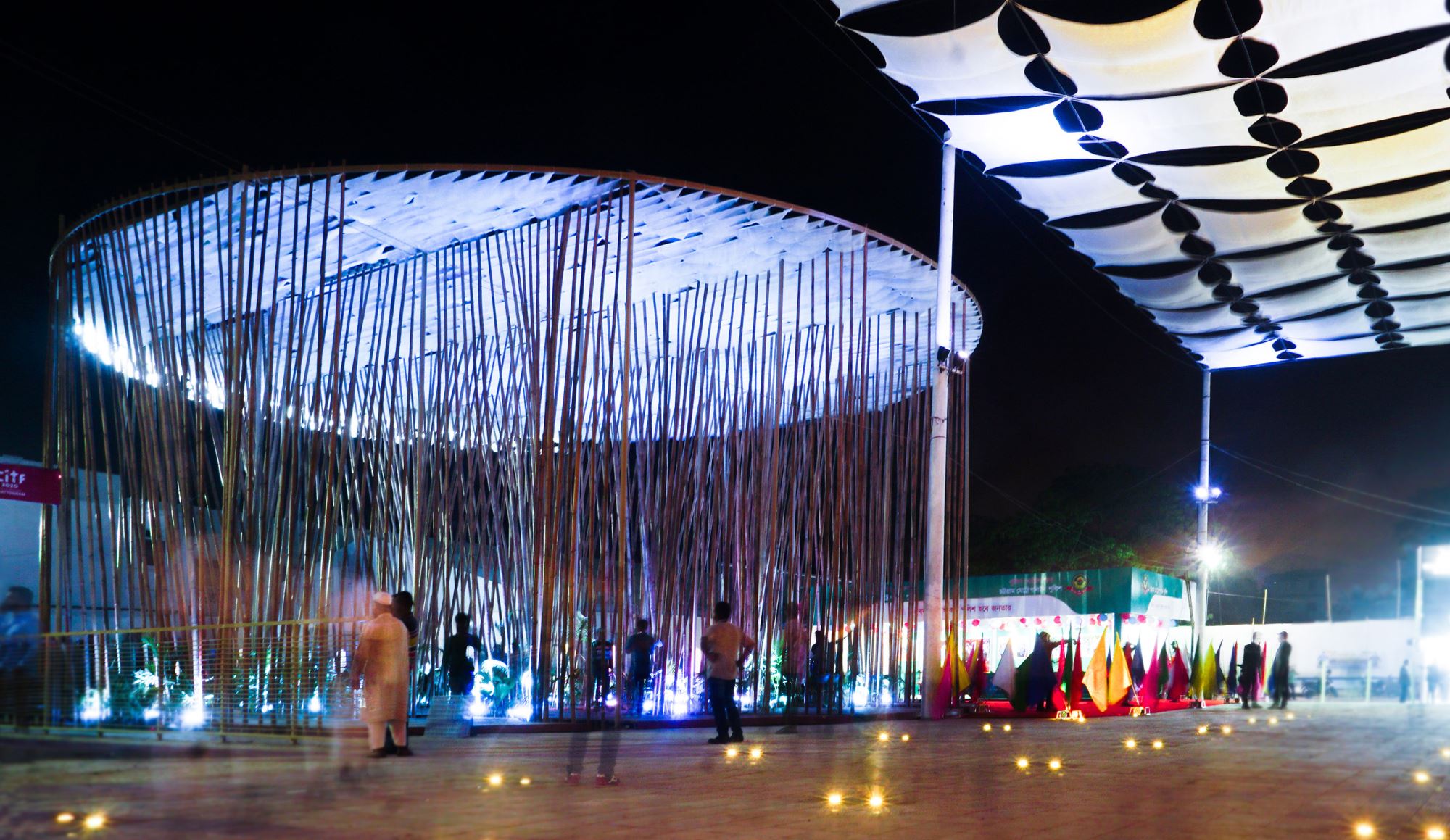


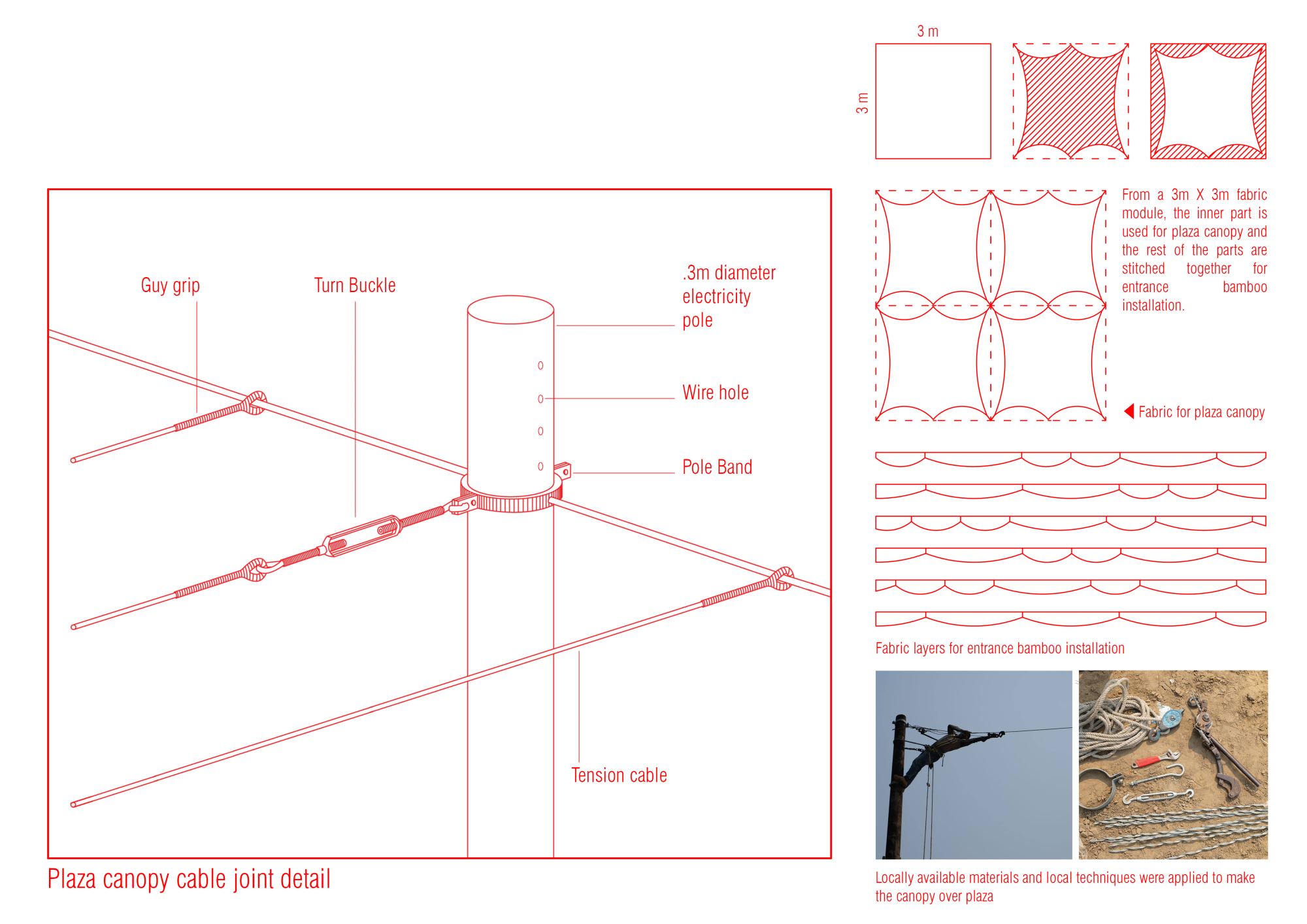



 loading......
loading......